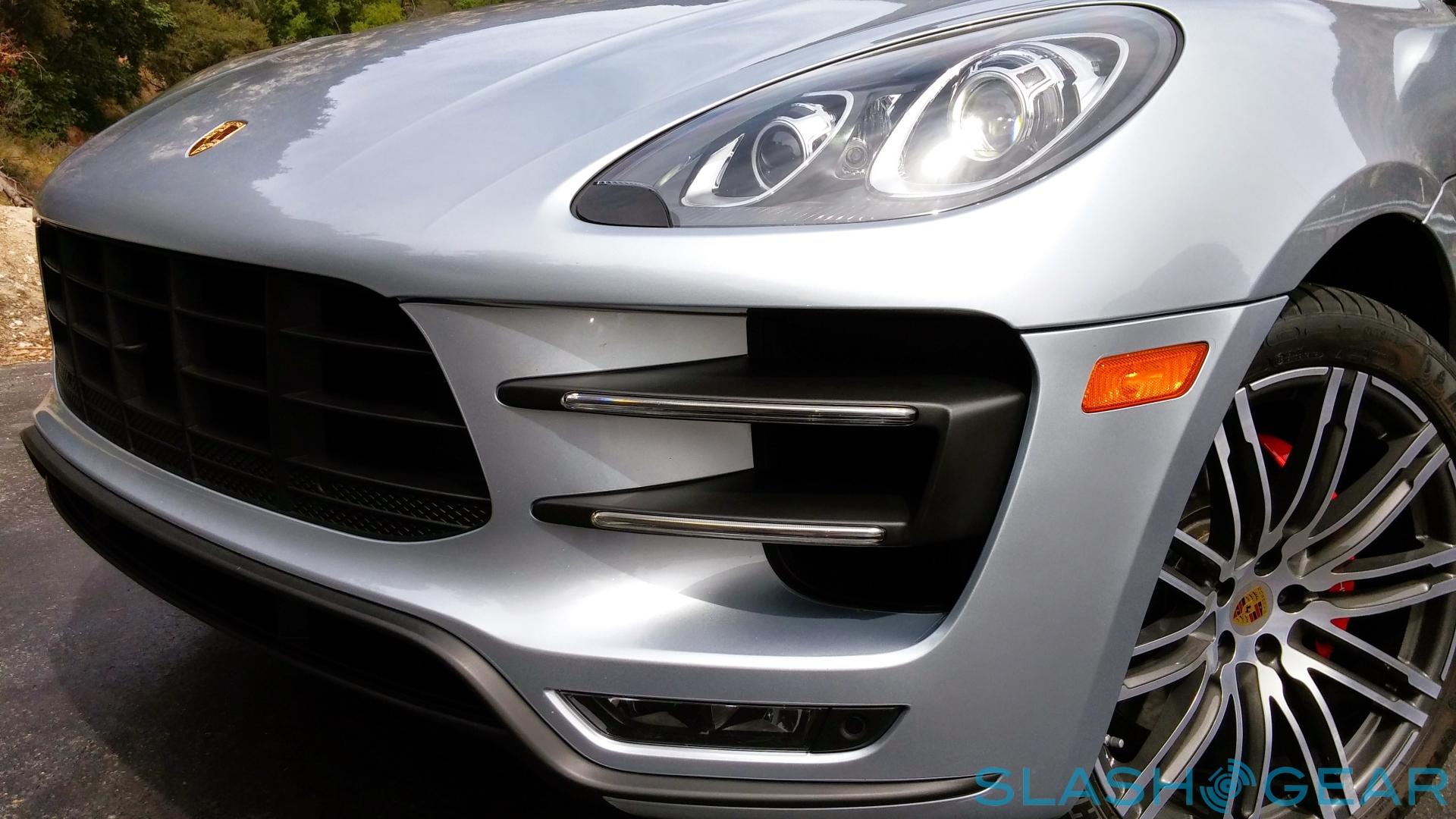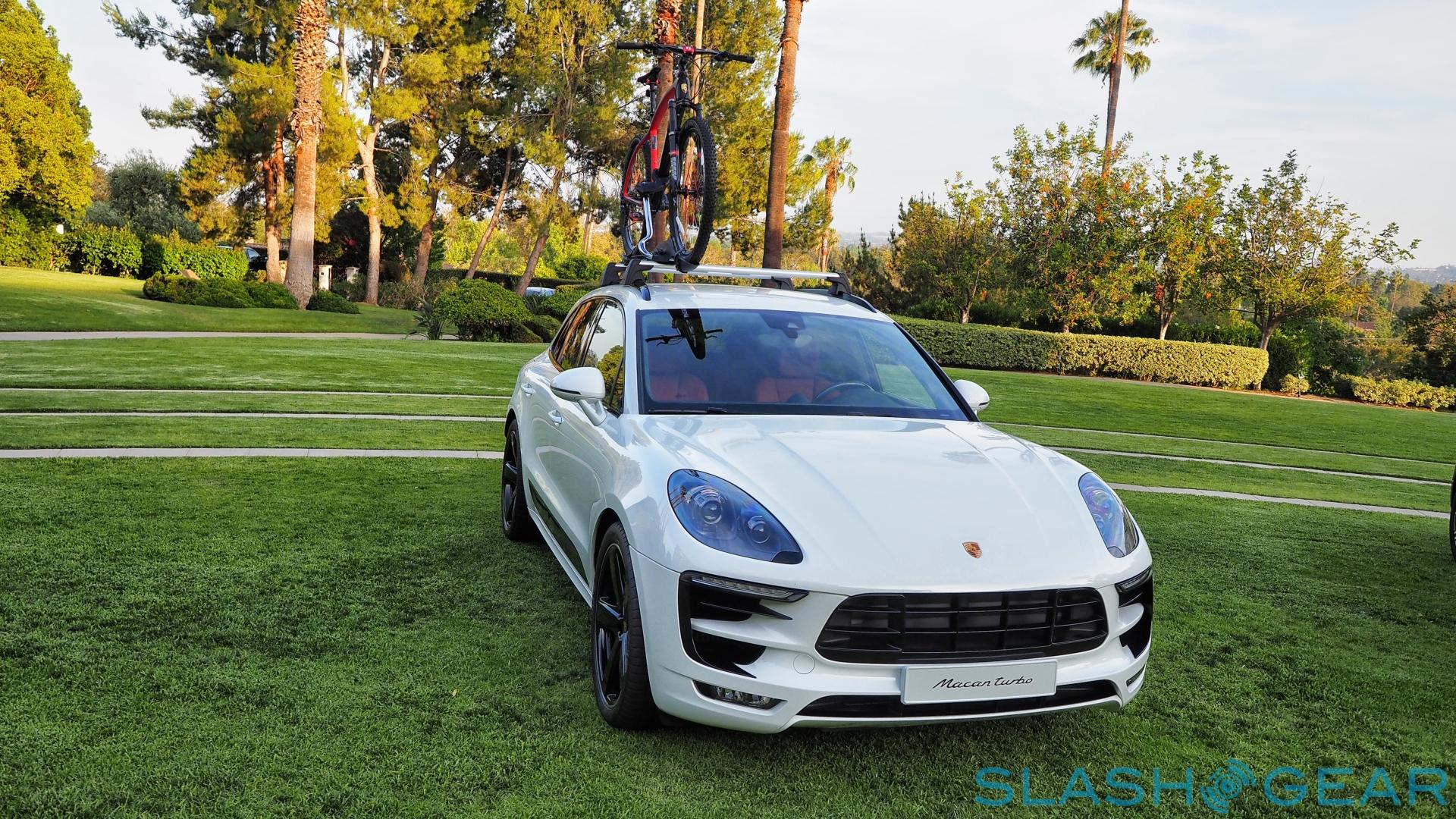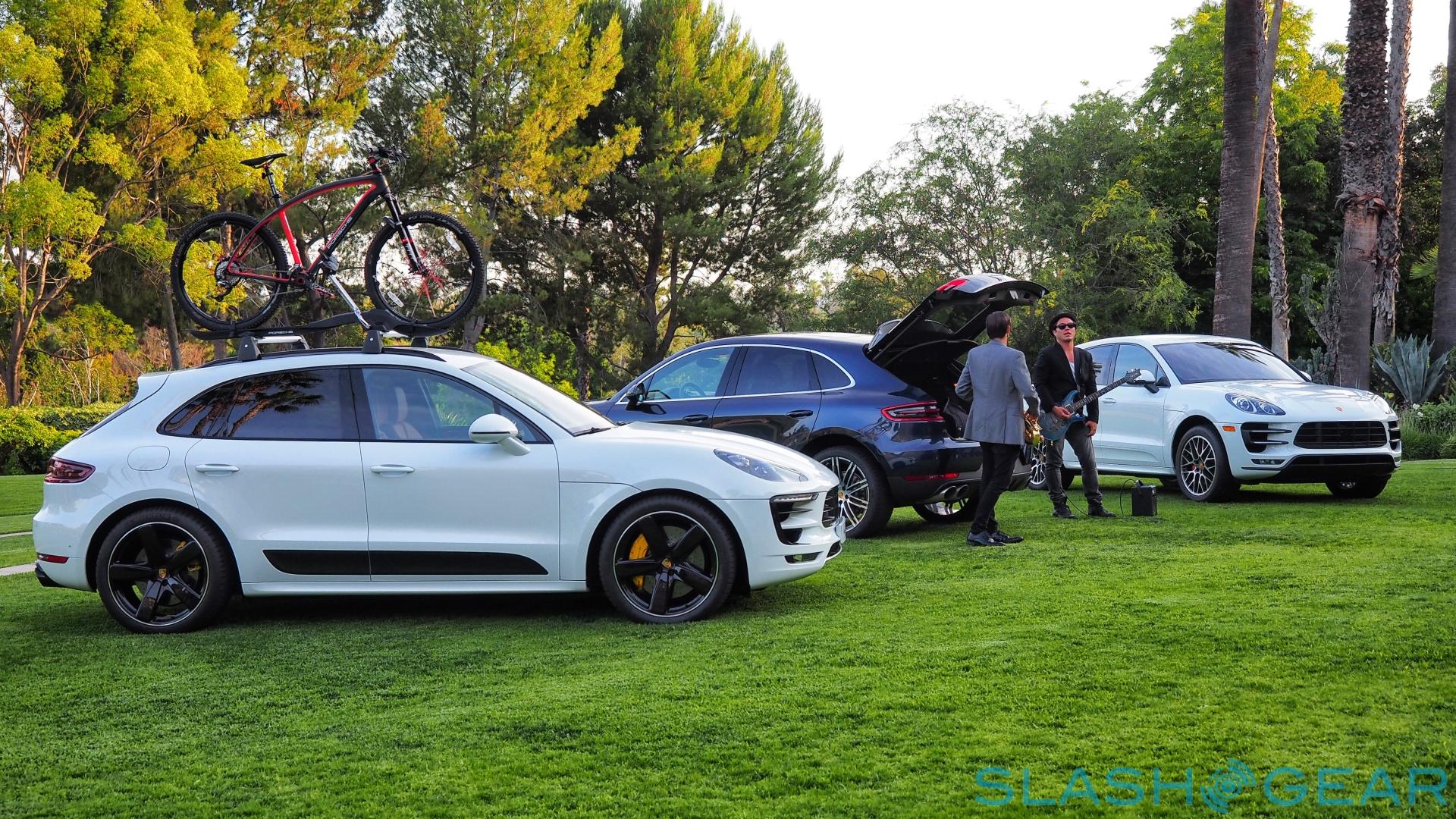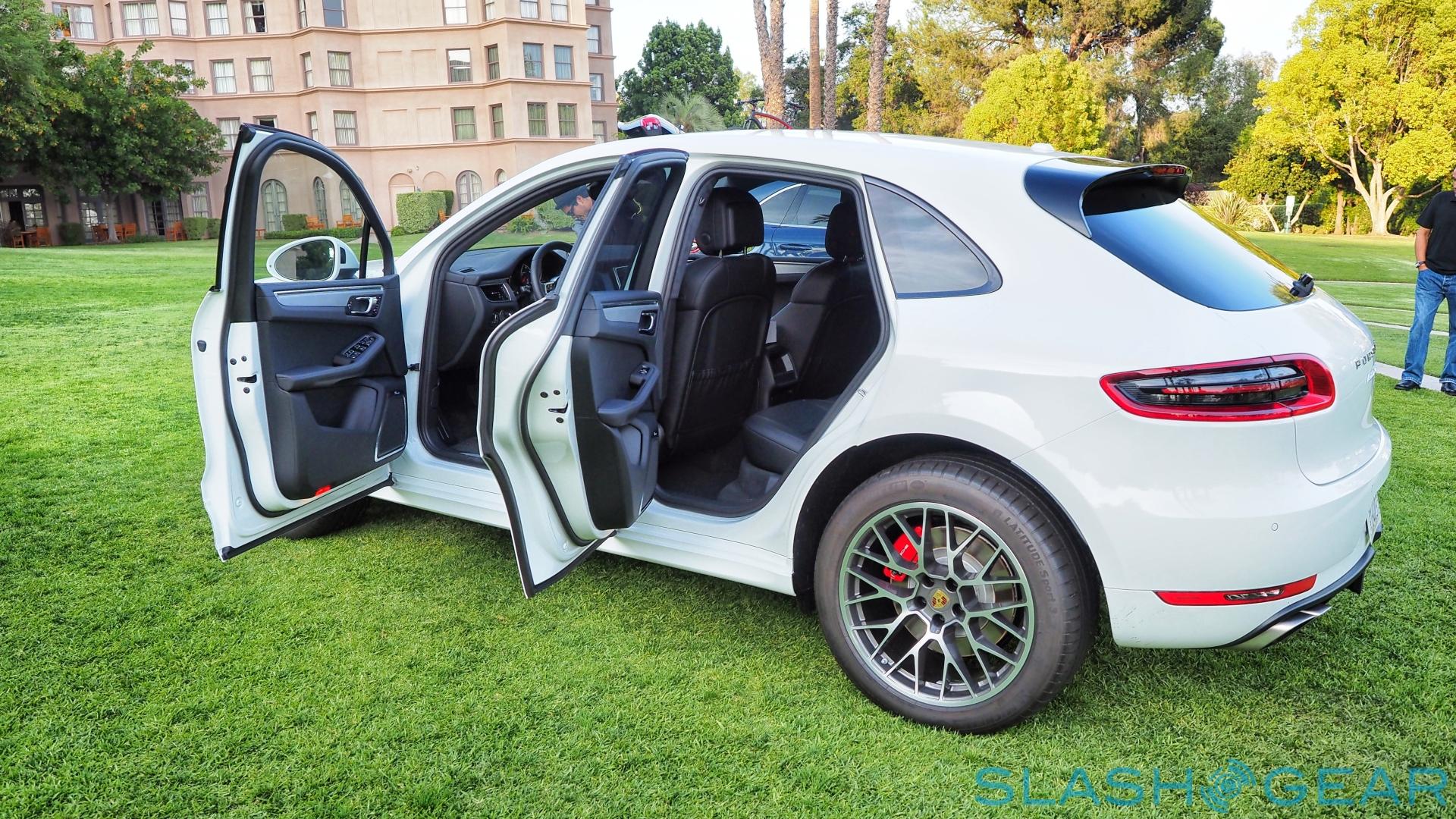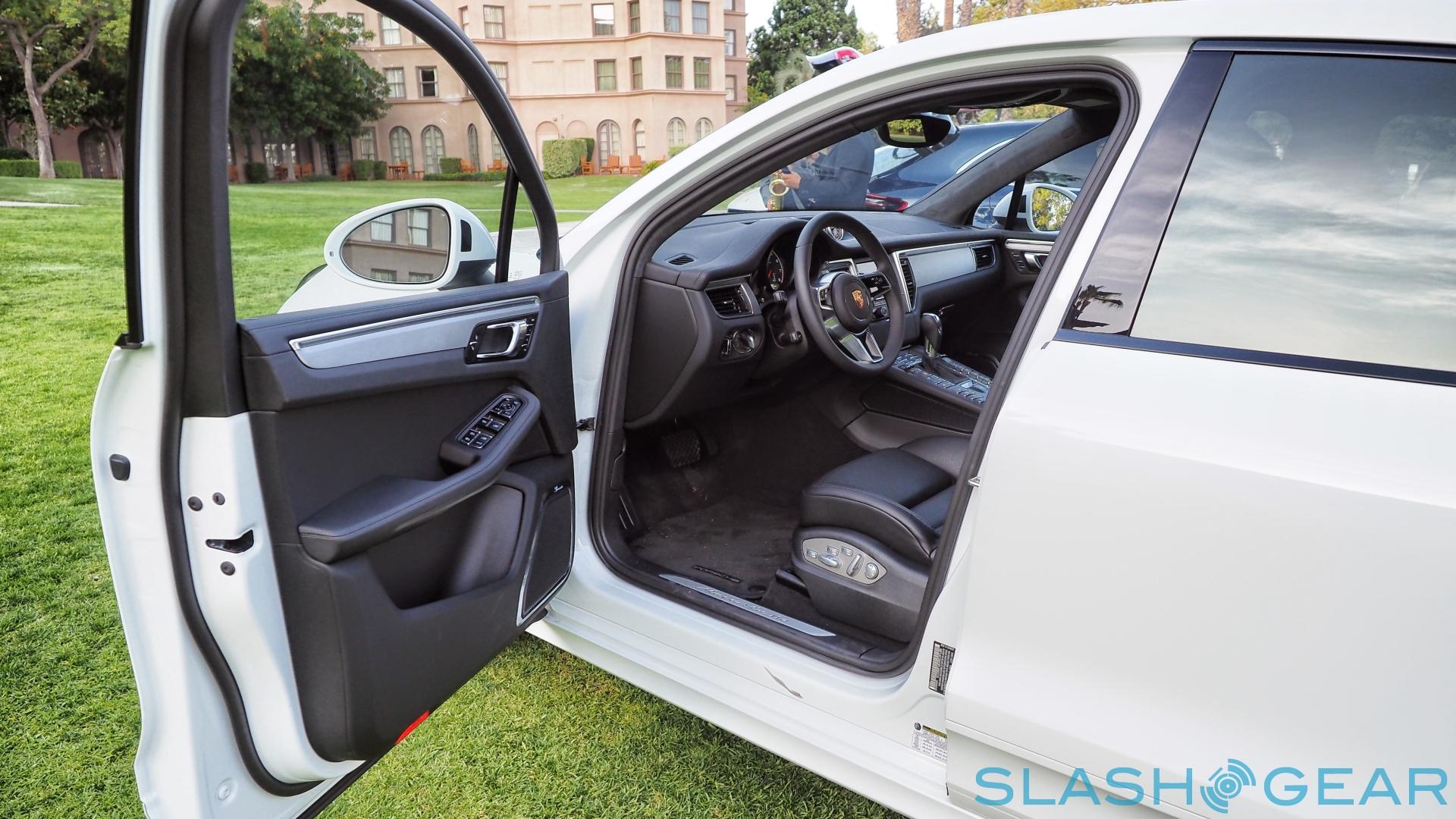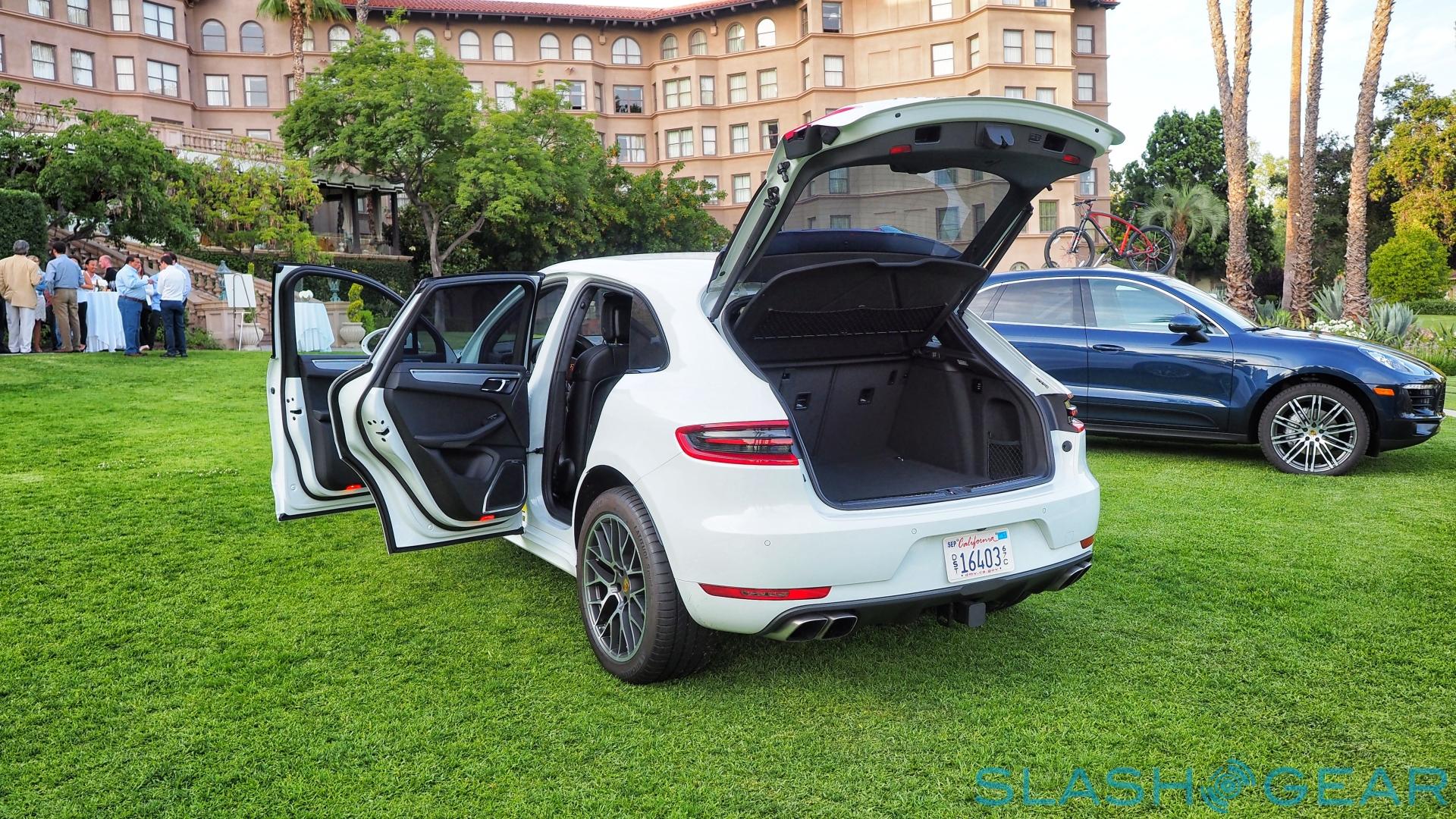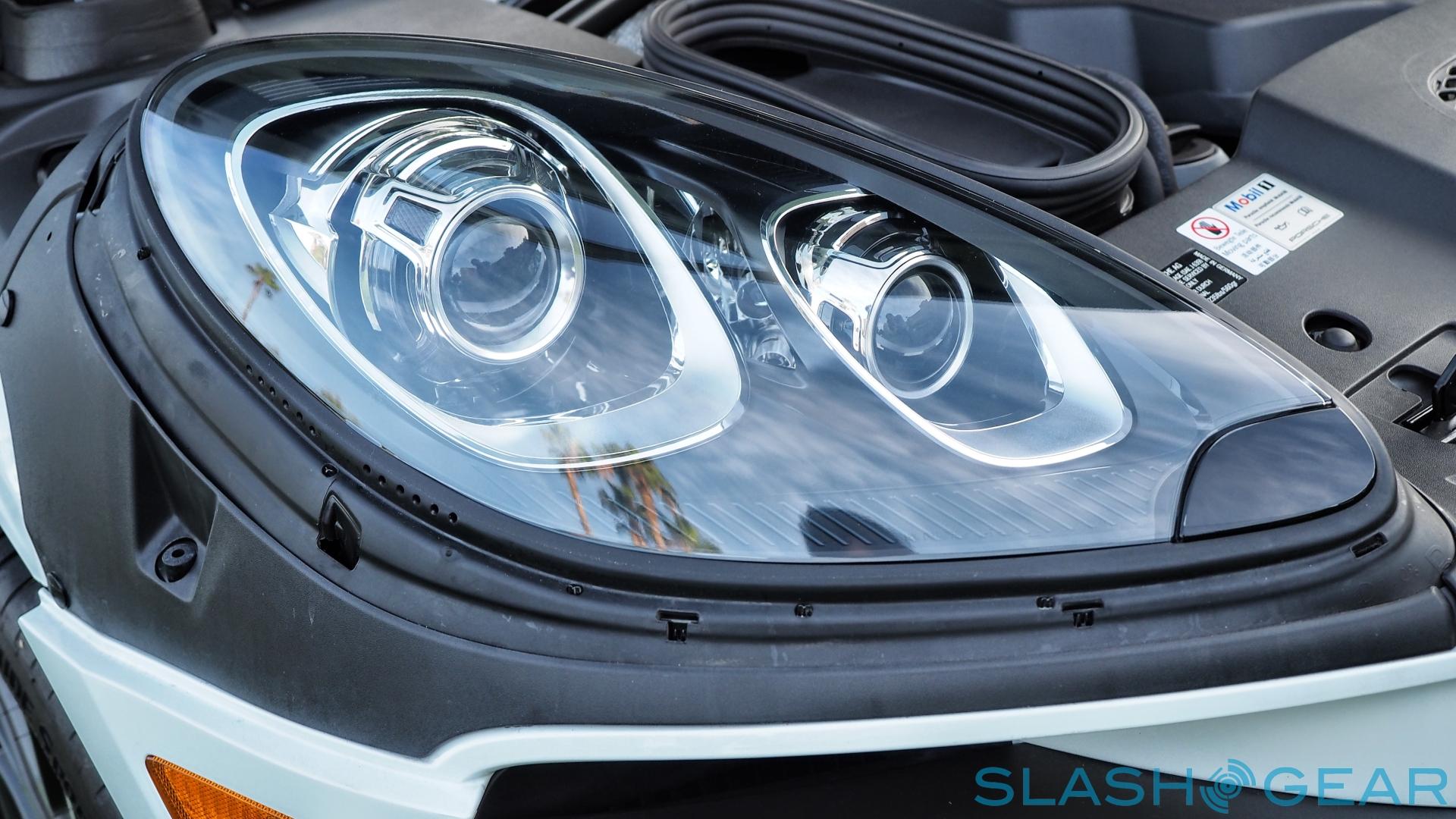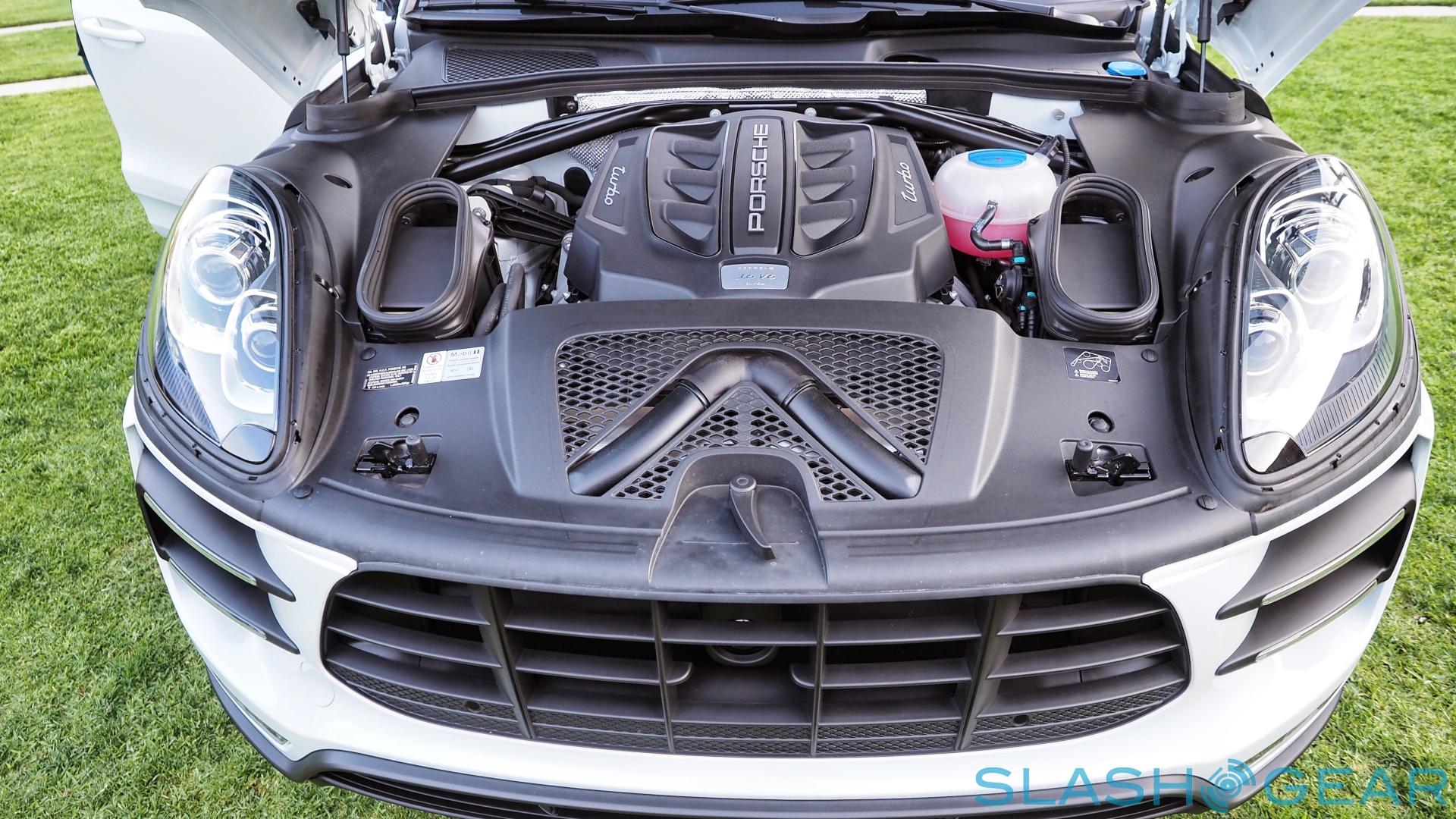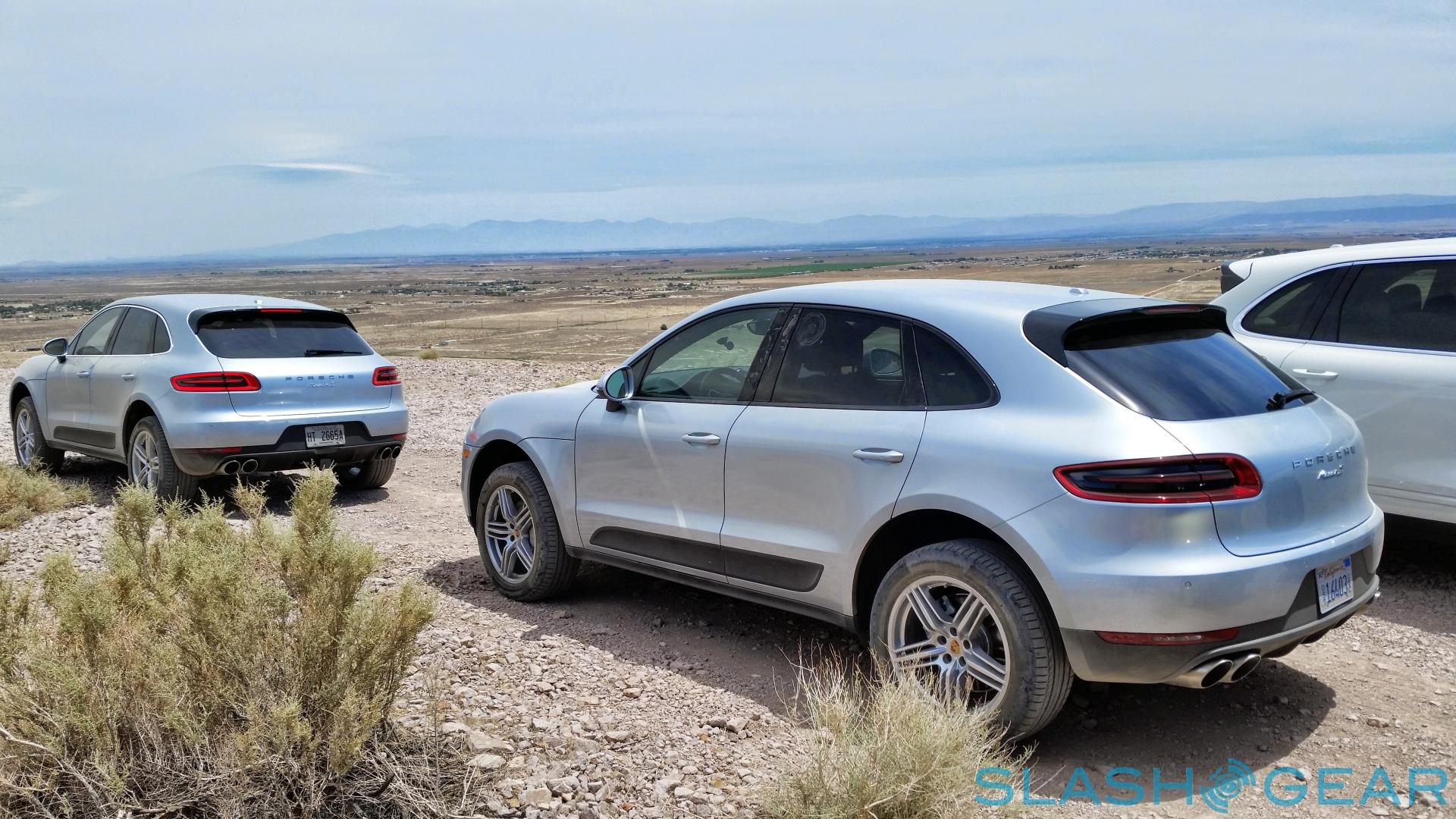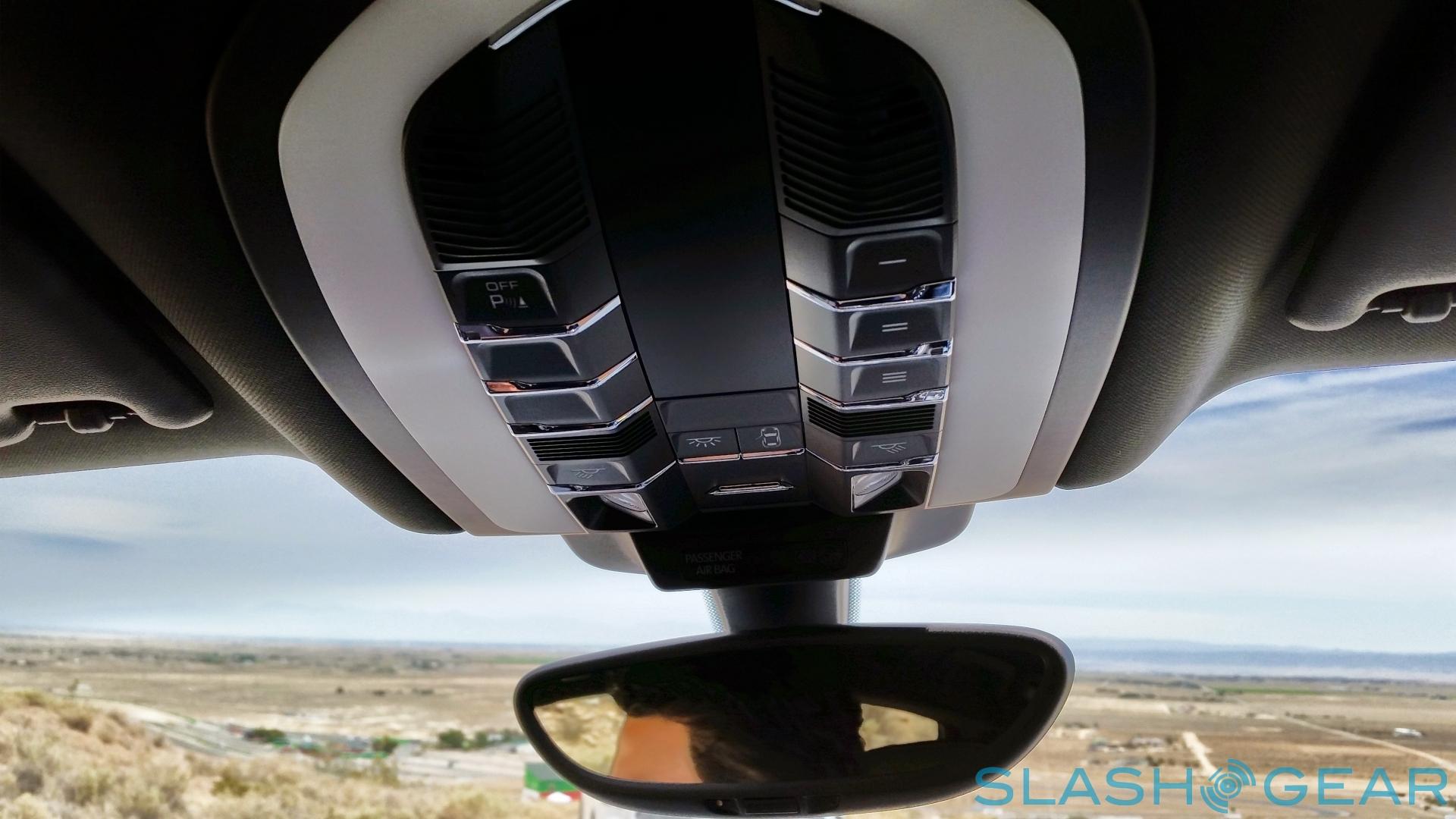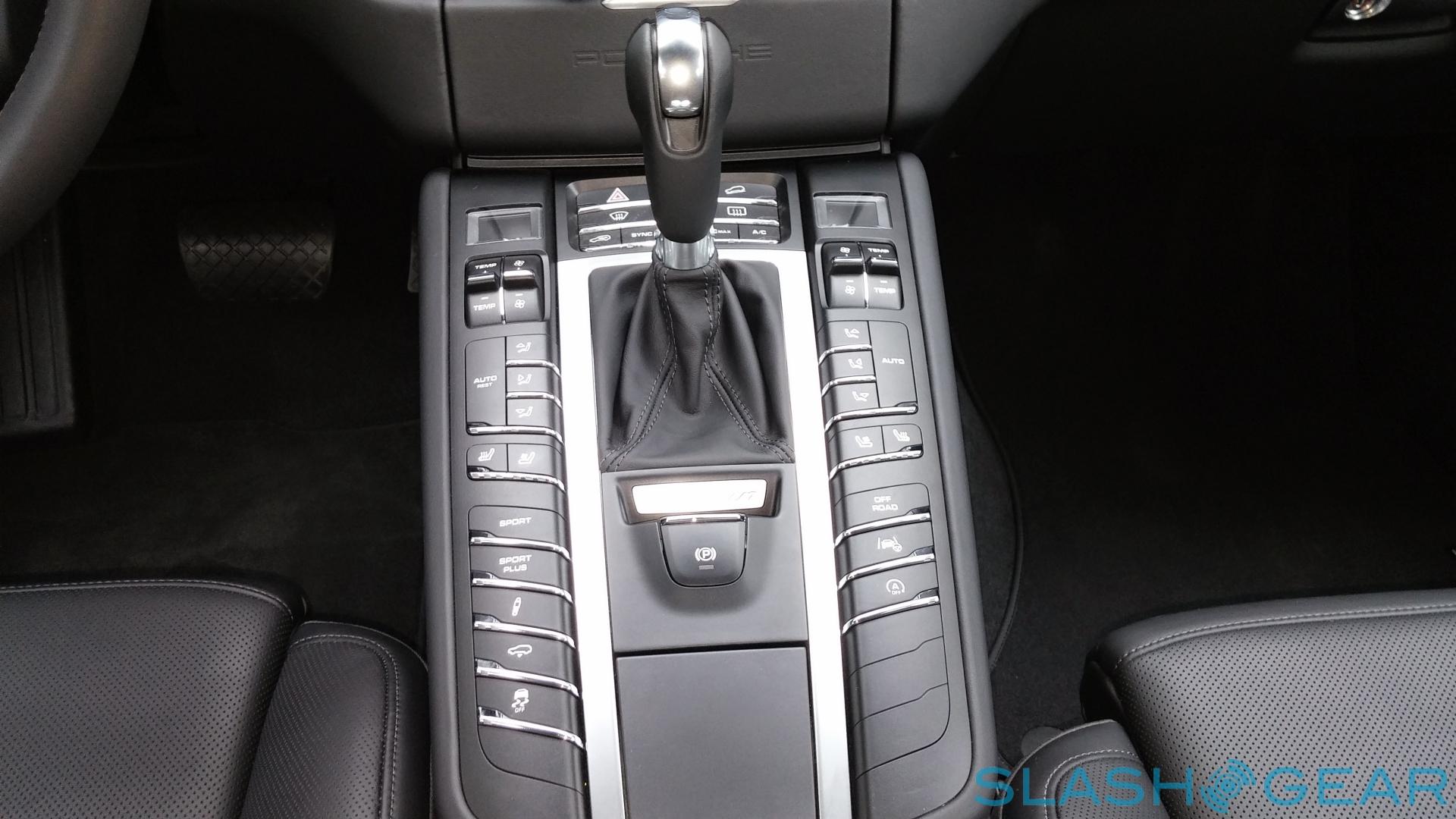First Drive: 2015 Porsche Macan S and Macan Turbo
We're a long way from the outrage of the first four-door Porsche, and a compact SUV/crossover was almost inevitable. The 2015 Porsche Macan is a direct result of the successes of the Panamera and Cayenne, with a name derived from the Indonesian word for tiger and a surprisingly broad price range depending on your heavy-handedness with both the options sheet and your right foot. As I found, picking the best match of those options isn't as straightforward as you might think.

It's hard to argue against the fact that Porsche made the right decision branching out from coupes and convertibles. The German brand is best known for its 911 and Boxster, but it's the Panamera luxury sedan and Cayenne luxury SUV that have broadened the company's market so considerably.

That this crossover tiger would follow, then, was a foregone conclusion. The big cat name seems appropriate for this sexy, tough yet extremely agile and swift car, and to my eyes there's very little to dislike about the design. There's Porsche design language all over, making it hard to be mistaken for anything but one of the brand's vehicles.
Like the Cayenne there's something of the "inflated 918" about it, but it's smaller and so the surfaces get an extra degree of tension to them. The sharper slope at the rear and the distinctive light clusters better echo Porsche's coupes, while the hood design is a stronger nod to the 918 too.
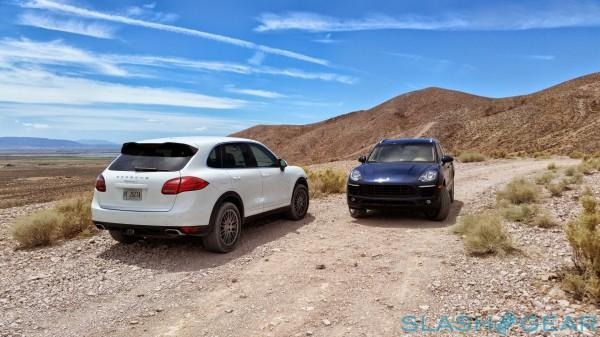
It's also where some of Porsche's racecar know-how comes in. Crossovers often look sporty but end up wallowing on the road, but the Macan has seen better-than-average efforts to trim weight, even if it gave them more work to do in the end.
So, the aluminum hood weighs just 29.6 lbs, and extends lower at the front for both a sportier look and to make the car more aerodynamic. That meant Porsche's engineers needed to get creative in rerouting the air intake to the engine right inside the hood's structure.
As a result, the front end looks great, performance increases, and there's even a cut in cabin noise. Still, even the most eager trimming can't disguise that an SUV tends to be a heavy car: at 4,112 lbs, the Macan is 110 lb more than the Panamera.
In some ways, it feels like there are actually two very different Macans, not a single model with different spec levels. The 2015 car is offered in two trims: the Macan S has a base price of $49,900, comparable to a well-spec'd Range Rover Evoque, while the Macan Turbo starts considerably higher, at $72,300.
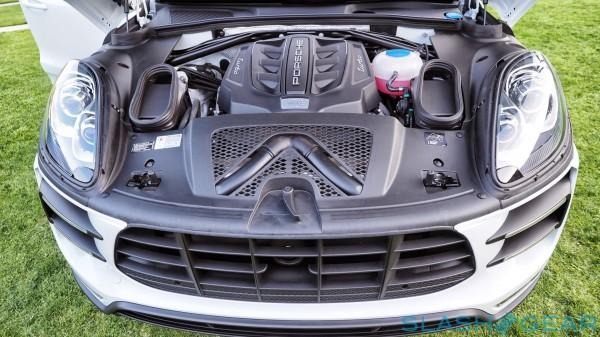
In the Macan S, your money gets you a 340 HP 3.0-liter twin turbocharged V6, while the Macan Turbo steps up to a 3.6-liter twin-turbocharged V6 good for 400 HP. The former gets round tailpipes, while the latter switches them to trapezoids, and there are different standard-fit wheels and brakes. Both have the same all-wheel drive system with an electronically controlled, multi-plate clutch, and a seven-speed, double-clutch transmission with tactile, solid metal paddle-shifters.
The 3.0-liter engine is good for 339 lb-ft of torque, a top speed of 156 mph, and a 0-60 mph run in 5.2 seconds. The bigger 3.6-liter raises that to 406 lb-ft, cuts the 0-60 time to 4.6 seconds, and tops out at 164 mph.

Porsche tells me it wants the Macan to be as much at home on the track as it is off-road – whether owners will actually take advantage of that is a different question – and so on top of the S/Turbo decision there are three different suspension and chassis types.
Standard-fit is a steel spring system, with Anti-Slip Regulation (ASR) that adjusts how much of the torque is shifted from the rear wheels to the front, depending on road conditions. Porsche Hill Control (PHC) optionally keeps the speed steady between 2-18 mph during descents.

Hit an "Off-Road" mode button on the dashboard, meanwhile – it's available at anything up to 50 mph – and the electronic mapping prioritizes traction, with gear changes, clutch pre-tensioning, and gas pedal response all in line for tweaks. Its flip side is the "Sport" button, which makes the accelerator more eager, the transmission hold lower gears for longer, and even the sound from the engine more enthusiastic. Unlike many such systems, you can actually tell the difference when it's on or off in the Macan.
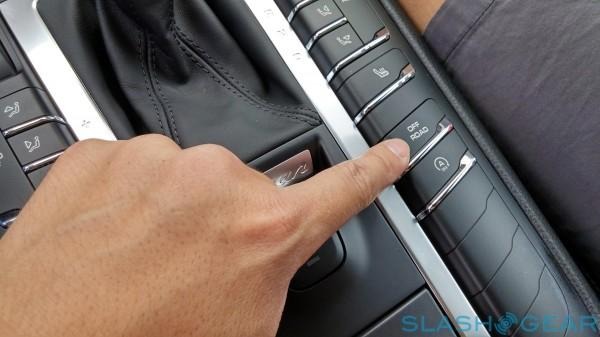
The second chassis system pairs the steel springs with Porsche Active Suspension (PASM), an electronic damping control system; it's standard on the Macan Turbo and an option on the S. PASM can be switched between Comfort, Sport, and Sport Plus modes, and in the latter there's a noticeable tightening of the suspension which helps during ambitious cornering.
Finally, there's air suspension. Sitting 0.59-inches lower in normal mode, but also offering a further 0.39-inches lower riding in Sport Plus mode, it automatically maintains a level ride height and promises better handling thanks to a lower center of gravity. At the other extreme, the Macan can rise up for better clearance off-road.
From the hotel, I picked up a super-high-end Macan Turbo that, at just shy of $100,000, proved to be fully loaded. Porsche had ticked most of the boxes, with Air-suspension ($,1385), the clever Torque Vectoring Plus (PTV Plus) traction control system ($1,490), and the Sport Chrono package ($,1290), which puts a huge stopwatch on the dashboard and adds launch control.
The optional thermal and noise insulating privacy glass really helps with the wind and road noise. The package costs $990 but it's definitely worth it. The Macan handled the sweeping curves of the Angeles Crest Highway and Angeles Forest Highway from Pasadena to Rosamond, Ca. without complaint, happy to cruise at a pace that belied my actual speed, but quickly rousing – yes, tiger-like – when I stomped on the gas. Then, with a suitably eager shove to push you back in the leather, the next corner rapidly surges into view.
Once I got to the Willow Springs International Raceway, I had the opportunity to try the various different suspension and equipment options back to back. Willow Springs has three different courses – short off-road excursion with big obstacles, a tight technical course, and finally Horse Thief Mile – and it's there that I was left torn about which Macan found most favor.
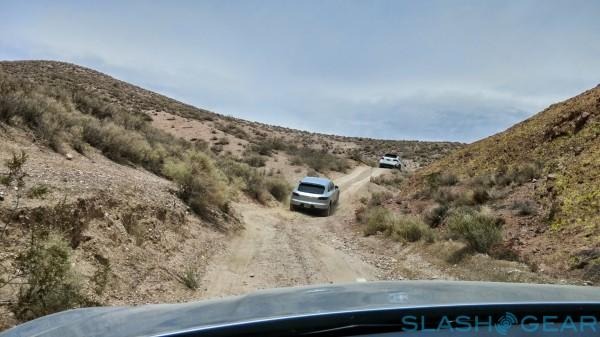
On a track, driven eagerly, the Turbo is clearly the more aggressive car. Porsche had a 911 Turbo S for me to play chase with, and the Macan Turbo suddenly turned into a coupe-hunter, screaming around the course in a way you simply don't associate with a compact SUV.
That's not to say the Macan S is tame, though it's when it's outfitted with the PASM suspension that it shines. The steel springs aren't bad, but there's a clear improvement when you step up a notch to Porsche's middle tier, and while it's not quite the screamer of the Turbo, the more affordable Macan certainly doesn't feel like a compromise on the road.
In fact, I asked three different instructors if they'd pick the Macan S over the Turbo and unanimously they opted for the S, though on the proviso that it had the air suspension, PASM, and PTV Plus boxes ticked, along with the Sport Chrono Package.
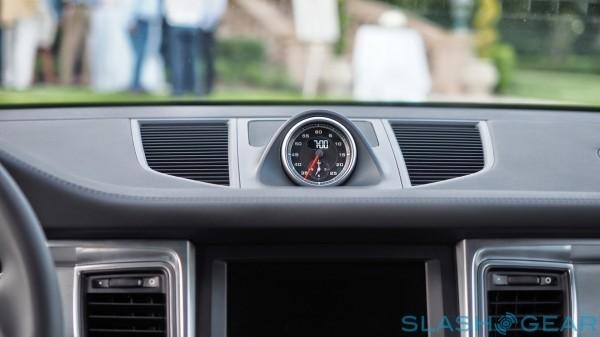
Going with the Macan S alone will save you $30,000, so unless you plan on hitting the track – and, again, I doubt many of the Macans sold will ever set tires on a track – you have to ask yourself if the 60 horsepower is worth the extra cost. At $372-per-HP it didn't quite give me sufficient wow-factor in real-world situations, it has to be said.
Whichever your budget stretches to, the interior is just as Porsche-typical as the exterior. You sit lower and deeper in the cabin than in a Cayenne, with the steering wheel design shared with the 918. The central console is wide and heavy with buttons, though much of the functionality they control depends on wading into the options list again.
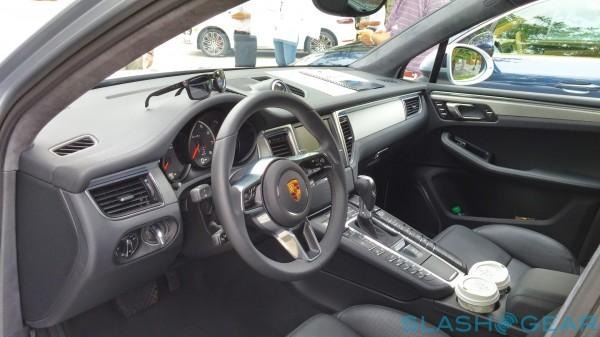
If you so wish it, you can have a two-part panoramic glass roof, various degrees of power-adjusted sport seats, lane keep assist, adaptive cruise control, navigation through the 7-inch touchscreen in the center stack, connectivity with an iOS or Android device, and a reversing camera. There's also an incredible-sounding Burmester audio system with sixteen speakers and more than 1,000W of amplification, though it has to be said that the standard-fit 11-speaker, 235W audio system sounds good on its own.
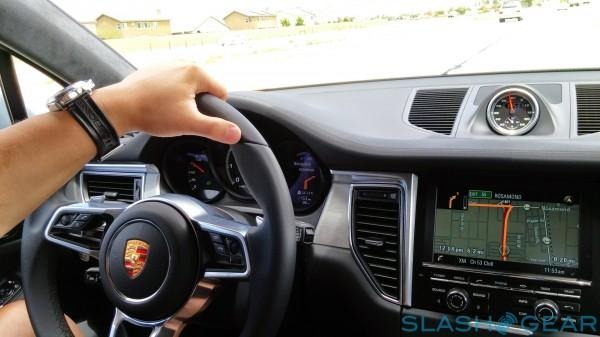
Interior space dips in comparison to the Cayenne, unsurprisingly. The rear seats fold 40/20/40, with the 17.7 cu-ft of space you get with them upright expanding to 53 cu-ft with them all down. The sharp slope of the rear glass cuts into that, though, meaning some thoughtful loading might be required if you're trying to transport bulky items.
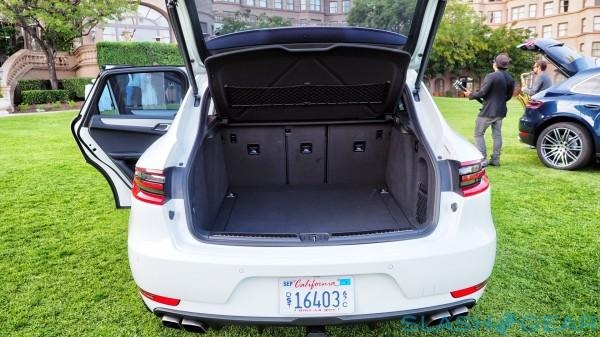
Headroom up front and in the back is good, though rear legroom was noticeably tighter than in a Cayenne. As for fuel economy, the Macan is rated for around 17 mpg in the city or 23 mpg on the highway, though those are still estimates.

The Macan is for anyone with a lead foot, enjoys owning a sportscar with the flexibility to bring the family along on camping trips, or even do a little off-roading with as little in the way of compromise as possible. If it were left to me, I'd opt for the Macan S and a careful peruse of the options, unless that is you're planning on giving 911 drivers a surprise on the track.






